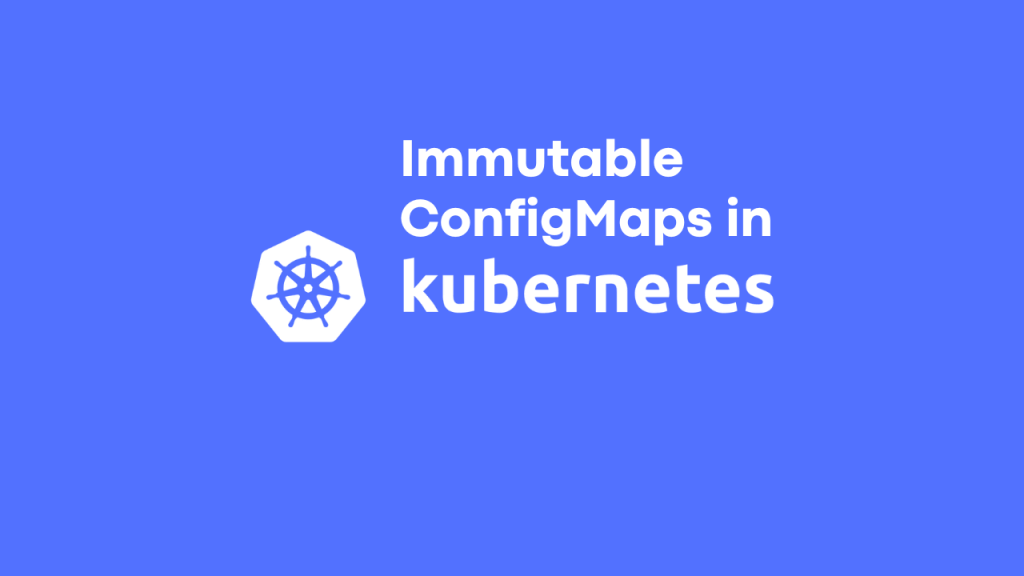
DevOps / Kubernetes / Security
Implementing Immutable ConfigMaps in Kubernetes: A Practical Tutorial
In the world of Kubernetes, ConfigMaps are a vital resource for managing configuration data in a declarative manner. ConfigMaps store key-value pairs that can be consumed by containers running in pods. However, as the needs of modern applications evolve, so do the requirements for managing configuration data. Enter Immutable ConfigMaps, a powerful feature that brings enhanced stability and security to Kubernetes environments. In this blog post, we will delve into the concept of Immutable ConfigMaps, explore their benefits, and provide practical examples to showcase their use.
Understanding ConfigMaps
ConfigMaps are Kubernetes objects that store non-confidential configuration data for applications. They decouple configuration from container images, allowing administrators to change configuration data without rebuilding or redeploying containers. ConfigMaps can hold data in different formats, such as plain text, JSON, or XML, and can be mounted as files or environment variables within pods.
Introducing Immutable ConfigMaps
Immutable ConfigMaps take the concept of ConfigMaps a step further by providing a safeguard against accidental or unauthorized modifications. Once created, Immutable ConfigMaps cannot be changed or updated. If any changes are required, a new Immutable ConfigMap must be created with the updated data. This immutability ensures the integrity and stability of configuration settings and prevents unintended modifications that could lead to service disruptions or security breaches.
Example 1: Creating an Immutable ConfigMap Let’s consider a scenario where we want to create an Immutable ConfigMap to store database connection settings. Here’s an example YAML manifest to create an Immutable ConfigMap named db-config:
apiVersion: v1
kind: ConfigMap
metadata:
name: db-config
immutable: true
data:
username: admin
password: secret
database: mydb
Note the immutable: true field that designates the ConfigMap as immutable.
Example 2: Using Immutable ConfigMaps in a Pod Now, let’s see how we can consume the Immutable ConfigMap in a pod. Here’s an example pod specification YAML snippet:
apiVersion: v1
kind: Pod
metadata:
name: my-app
spec:
containers:
- name: my-app-container
image: my-app-image
envFrom:
- configMapRef:
name: db-config
In the above example, we utilize the envFrom field to inject all the key-value pairs from the Immutable ConfigMap db-config as environment variables into the pod’s container.
Use Cases for Immutable ConfigMaps:
- Ensuring Configuration Consistency: Immutable ConfigMaps are ideal for scenarios where you want to enforce consistent configuration across multiple pods or applications. By preventing modifications, you can maintain a known and reliable state of configuration data.
- Securing Sensitive Information: Immutable ConfigMaps can be used to store sensitive data like API keys or database credentials. Once created, these ConfigMaps cannot be altered, reducing the risk of unauthorized access or accidental exposure.
- Compliance and Auditing: Immutability allows you to achieve compliance requirements by providing an auditable record of configuration changes. This feature is particularly valuable in regulated industries where change tracking is crucial.
Conclusion
Immutable ConfigMaps offer enhanced stability and security by preventing modifications to critical configuration data. By embracing immutability, Kubernetes administrators can ensure configuration consistency, secure sensitive information, and meet compliance requirements. Understanding and leveraging Immutable ConfigMaps can contribute to more reliable and resilient Kubernetes environments.
Remember, while ConfigMaps provide flexibility for dynamic configuration changes, Immutable ConfigMaps provide the added layer of protection for critical configuration settings.
Disclaimer:
The views expressed and the content shared in all published articles on this website are solely those of the respective authors, and they do not necessarily reflect the views of the author’s employer or the techbeatly platform. We strive to ensure the accuracy and validity of the content published on our website. However, we cannot guarantee the absolute correctness or completeness of the information provided. It is the responsibility of the readers and users of this website to verify the accuracy and appropriateness of any information or opinions expressed within the articles. If you come across any content that you believe to be incorrect or invalid, please contact us immediately so that we can address the issue promptly.
Tags:
Comments
1 Response
Leave a Reply







[…] expansive influence can be seen in diverse sectors, from healthcare to manufacturing, and even education to agriculture. It’s doing this by overhauling the way these sectors function, spearheading a wave of […]